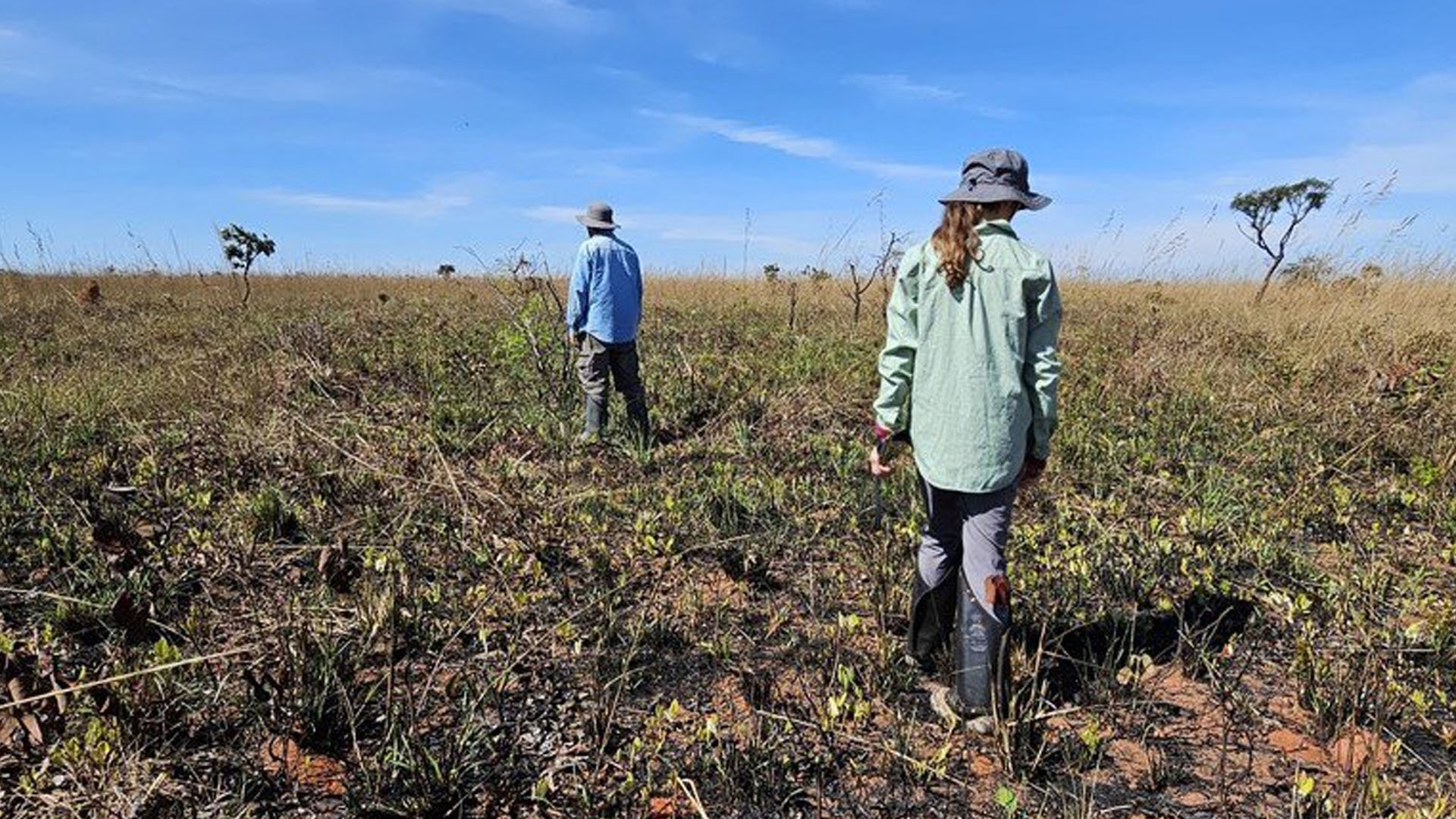Pollinators are integral to both functioning ecosystems and global food production. Despite their importance, the landscapes that pollinators need for survival are increasingly under threat from human activities such as intensive farming.
The Brazilian Cerrado biome
The Brazilian Cerrado biome is a global biodiversity hotspot, ranging from open grasslands to dense gallery forests. Found in the highlands of Central Brazil, the Cerrado is the second largest biome in South America after the Amazon. There is an ongoing threat to species in the Cerrado which serves as a driving force behind key environmental research.
Despite this threat, there is a key lack of data on which species are present in these landscapes and what their functional roles are (how organisms operate within the ecosystem). To discover and understand what is being lost, a baseline dataset must first be established.
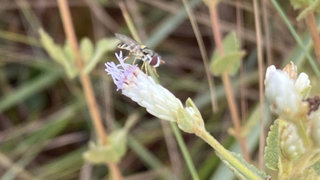
Addressing a research gap
Kendall Jefferys, a PhD student in the School of Geography and the Environment at the University of Oxford, has been undertaking fieldwork in the Cerrado to address the fundamental research gap.
Speaking about her research, Kendall commented: “Establishing what’s there and getting this baseline information of the species of pollinators, which we know are so important for ecosystem services, was a key goal of mine.”
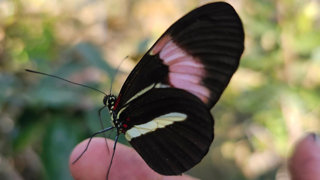
Having been awarded a RGS-IBG Henrietta Hutton Research Grant, Kendall collected data in Parque Nacional das Emas between May and June 2024, working alongside a team of four colleagues from the University of Goiania.
Establishing a dataset
Parque Nacional das Emas is a 132,000 hectare conservation area within the Cerrado and provided a rich field site for Kendall to specifically focus on exploring the complexity and resilience of plant-pollinator interactions, as well as characterising the vegetation structure. This was important for Kendall who said: “We want to understand how changes in the structure of the vegetation will affect pollinators and how they interact with plants.”
Working across a vegetation gradient, emerging from dense forests to open grasslands, Kendall used a handheld LiDAR scanner attached to a backpack to create a record of the vegetation at 15 50 by 50m plots. From this, structural differences across the gradient such as plant height could be quantified. Kendall then recorded pollinator interactions in smaller 15 by 15m plots to create a picture of floral visitors that landed on flower structures.
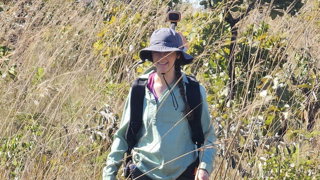
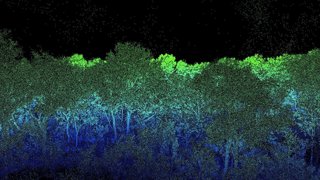
Sharing knowledge
Kendall worked alongside fellow researcher Poliana Menezes who, studying the same plots, recorded bee community composition and species diversity more generally.
Kendall said: “Poliana used scent traps to catch species such as orchid bees which I was less likely to just see out foraging, as well as observing the landscape more broadly to record things we may have missed because they didn’t appear in our observation period. I think the different methods we were using definitely complemented each other.”
Kendall and Poliana’s collaboration was an essential part of the project, creating space for practical advice and knowledge to be shared, and the results will lend to a rich record of bee diversity in the park.
Collaborating with local researchers
Listening to first-hand accounts and working alongside local researchers formed an important part of the research experience. Getting to the Parque Nacional das Emas involved a seven hour drive through vast fields of corn and soybean, fuelling conversations around the conversion of savanna ecosystems into farmland.
Kendall said: “The collaborators I was working with were saying just how intensive and high input the agriculture is. They regularly saw planes spraying pesticides over the [nearby agricultural] fields. It is hard now to find native vegetation and it is very quickly becoming encroached on and being lost.”
Kendall’s experience from the field underpins the urgent threats to the Cerrado’s landscape and served as ongoing inspiration throughout the research trip.
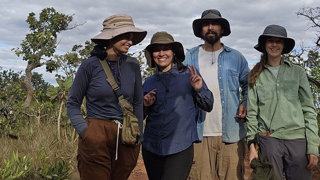
Despite potential language barriers, it quickly became apparent that the shared passion for the project provided a mutual understanding between colleagues in the field. Kendall commented: “Being in the field, you pick up things so much faster. We started to understand what we were talking about in English or Portuguese just because we had that shared experience. I think when you’re in the field, those barriers break down.”
Future plans for data collection
Being able to follow the changes happening within the Cerrado over an ongoing period of time continues to breathe life into this research. Looking ahead, the community ecology lab at UFG is hoping to conduct data collection every five years to track the changes in biodiversity that are unfolding. This includes revisiting the area and sampling in different seasons. This further layer of temporality would offer insight into the stability of pollinator communities and also their interactions with plants.
Reflecting on her research journey, Kendall commented: “Everything has been processed and put together and now I get to do the really fun part of finding out if what I have been observing and thinking is actually true, or is the data telling a different story?”
Henrietta Hutton Research Grant
Kendall Jefferys' project was supported by the Henrietta Hutton Research Grant.
Find out more about the full range of grants available to support students and researchers with their fieldwork.
